Have you noticed?
Many Italian ceramics have been treated with an antiquing jell. Sooner or later, the pieces will have to be washed. You now have a brand new piece, one which has lost some of its characteristics. The aging agent is applied AFTER the piece has been fired making the effect only temporary.
 So, why not apply the antiquing process BEFORE the last firing, making it permanent, as I have done with the urn you see above? One of the more successful applications, I have discovered, is to save the "dregs", or sediment produced while painting with water and powder pigments.
So, why not apply the antiquing process BEFORE the last firing, making it permanent, as I have done with the urn you see above? One of the more successful applications, I have discovered, is to save the "dregs", or sediment produced while painting with water and powder pigments.
On the left, the urn is painted and sprayed with a very light coat of the "dregs" liquid. You can spray several coats of this water-based liquid until you achieve the desired effect. All that is then left to do is to apply a final coat of clear glaze and then fire the piece to 1800 degrees Fahrenheit. After firing, (picture on the right) the aging treatment becomes more pronounced.

See how the pigments fuse with the glaze during the final firing, making the colors brilliant and permanent (pictured on the right). Now you can scrub and clean all you like without fear of losing any part of your original piece of art.
Tell me, how do you feel about giving ceramics an aged patina?
Gina.


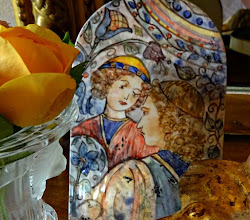


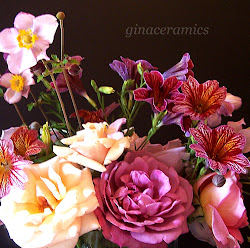
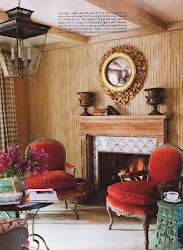



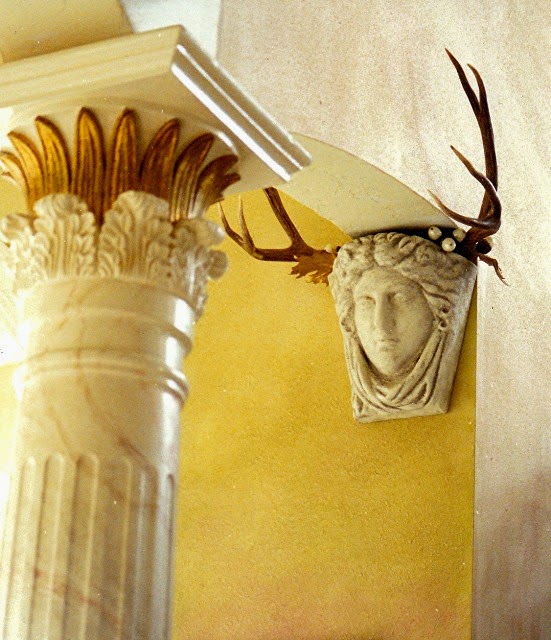

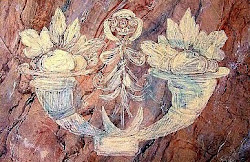

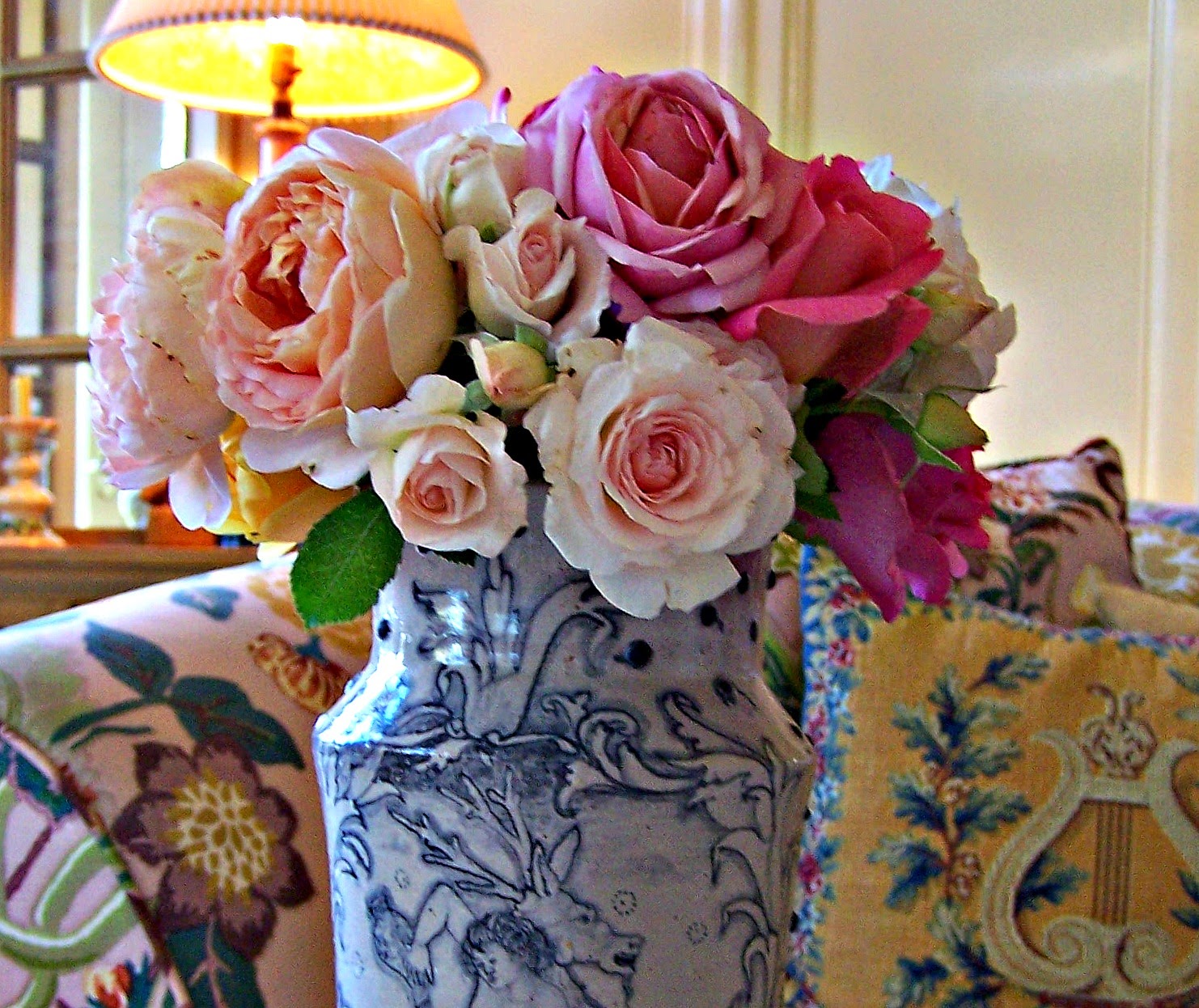

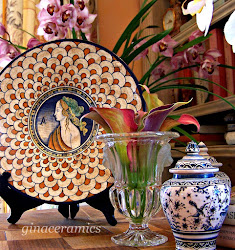



Great thinking on your part! I learned from someone in the decorative art field this trick several years ago....always save your dirty paint water to make washes over the final product to age it....it is nothing more than an amalgamation of all colors used in your project!
ReplyDeleteHi Theresa, Exactly. I have always kept in reserve some of the "dirty water" to use in my decorative painting assignments. Sometimes I even add a certain color to get the tint just right.
ReplyDeleteGina,
ReplyDeleteyou already know how much i love your work and all the more when you manage to add this aged patina...This is such a beautiful urn you created!
Have a wonderful week end! :-)
Lala
Dear Lala, thank you for commenting. It is so appreciated. I am so glad that you like the added patina on my ceramics because I also like it.
ReplyDeleteOh, I missed this, I'm so sorry. Yes, I love the aged patina – it's totally fitting and much better than without. Of course, I know so little about ceramics but everything you do is exquisite, Gina! Have a great weekend.
ReplyDeleteGina, This urn is gorgeous! I love the aged patina and didn't know it would wash off on certain ceramics. Thanks for sharing another of your beautiful pieces at my party.
ReplyDeleteHugs,
Sherry
Hi Sherry, In Italy, they add an oily furniture stain to finished ceramics. It is then sprayed with hair spray or some other sealant. Of course, this will eventually come off if you scrub hard enough. Those kind of ceramics should not be used for food service but enjoyed as an artifact.
ReplyDeleteHi Gina! Your talent is just so amazing and I think that piece you shared is gorgeous. I love the tips you included too and we appreciate you linking it up this week at Inspiration Friday!
ReplyDeleteVanessa
Hi Vanessa, Thank you for letting me participate.
ReplyDelete